#Waldensians
Explore tagged Tumblr posts
Text
The Tapestry of History, 10 – The Rise of the West, 5 – The Reformation, 1
(Image – Desiderius Erasmus around the time of the publication of In Praise of Folly) The Reformation began as a protest movement. It gave birth to the third great branch of Christianity, Protestantism. Its founders did not at first intend to separate from the Roman Catholic Church, but to inspire reform from within it. Although a handful of individuals are usually credited with founding the…
#Albigensians#Brethren of the COmmon Life#Cathars#Erasmus#Holy Roman Empire#Husites#In Praise of Folly#John Hus#John Wycliffe#Lollards#Saint Francis of Assisi#The Imitation of Christ#Waldensians
0 notes
Text
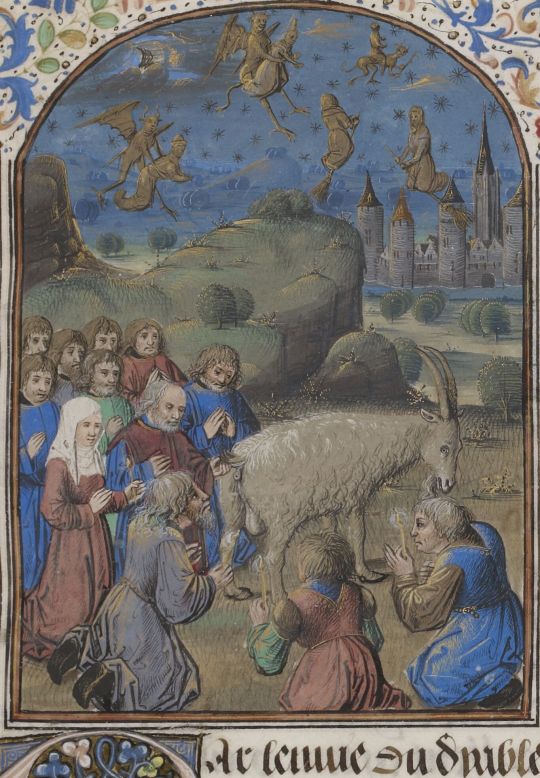
the kiss of shame: osculum infame
satan-worshippers approach the devil in the form of a goat to kiss his anus. in the background, demons and witches flying on brooms.
illustration for a copy of "sermo contra sectam vaudensium" by johannes tinctoris (a treatise against waldensian witchcraft), bruges, c. 1470-80
source: Paris, BnF, Français 961, fol. 1r
#15th century#witchcraft#sermo contra sectam vaudensium#johannes tinctoris#Jean Tinctor#the arras witch treatises#waldensian witchcraft#osculum infame#kiss of shame#witches sabbath#goats#witches#devils#demons#medieval art#illuminated manuscript
271 notes
·
View notes
Text
Buried with Hope
It had all happened so suddenly, without warning. The sound of a mighty force inhaling all the air around you, then with one tremendous breath, exhaling – all that was once became naught. The last thing he remembered was the earth disappearing beneath his snowshoes and then nothing. For a long while, he lay trapped beneath the tomb of white, unaware of what had happened. When he awoke, he…

View On WordPress
#avalanche#Balziglia Italy#buried alive#Germanesca Valley#Hope#Martin Luther#Matthew 16:26#Mount Piatasse#New Year&039;s Resolution#Pinerolo Italy#Preacher#Protestant#Reformation#Roman Catholic Church#Waldensian#Wurms Germany
0 notes
Text
If I ever become some species of crackpot I hope I’m at least original. None of this “general relativity isn’t real” BS. Something new, like matter is secretly continuous and atoms are a Waldensian lie. Cubes have eight faces, but due to original sin we only perceive six. There is a second dimension of time, but you can only traverse it in your sleep.
192 notes
·
View notes
Photo

The Sixteenth-Century Massacre of the Waldensians of Mérindol
As the Reformation developed in France in the first half of the 16th century, there were several episodes of severe repression which preceded the Wars of Religion (1562-1598). These were times of great hardship and oppression against those who embraced Protestant teachings. One notable chapter of persecution took place in the Luberon region of France against the Waldensians (Vaudois), the spiritual descendants of Pierre Waldo, which led to the Mérindol massacre in 1545.
Early Persecution
Early in the 12th century, Pierre Waldo (l. 1140–1218) took a vow of poverty, confirmed by Pope Alexander III (served 1159–1181), and became the leader of a sect known as the Waldensians. Waldo was among the forerunners of the Reformation who sought to purify and reform the Catholic Church from within through a return to apostolic teaching. Initially, he did not seek separation from the Catholic Church or the establishment of a new sect. In time, partly due to their emphasis on preaching the gospel in the local language, Waldo and his followers were banned from preaching by Pope Lucius III (served 1181–1185). Waldo was excommunicated at the Council of Verona in 1184, and Waldensian teaching was condemned at the Fourth Lateran Council in 1215.
Exiled from their city of Lyon, the Waldensians spread to the valleys of Dauphiné and the Alps of Piedmont, to Languedoc, and to Spain. The Inquisition failed to stamp them out and many of the exiles settled in the Luberon region in southern France. The Waldensians sought to live in peace in the sheltered valleys of the Luberon where they drained the swamps and cultivated lands belonging to Italian lords. It is said that people inhabiting the plains feared the Waldensians who had a reputation as sorcerers. At that time, they had spiritual leaders called uncles (barbes) in their language who had authority over the people. The barbes were considered wise and venerable, and mysterious powers were attributed to them. Their brothers in Dauphiné had previously suffered persecution and many had fled to Luberon for safety.
The archbishop of Aix feared that this concentration of heretics might embrace the Reformation. Around 1530, the inquisitor Jean de Roma was sent to investigate the Waldensians where he committed atrocities and enriched himself at their expense. As a result of this initial violence, two Waldensians, Maurel and Masson, crossed the frontiers to Alsace and Switzerland to confer with Reformed leaders in Geneva. They were persuaded of the need to reform their beliefs, to definitively break with superstitious practices, and were sent back with letters for their brothers in Mérindol. Only Maurel arrived home safely; Masson was arrested and burned alive at Dijon. A decisive meeting took place in Piedmont in 1532 with Waldensian leadership from different regions. William Farel (l. 1489–1565), over six days, convinced them to preserve only two sacraments, baptism and the Eucharist, without the mystical sense given by the Catholic Church. Farel welcomed them to the Reformed faith with enthusiasm and called them “the elder sons of the Reformation.”
Continue reading...
54 notes
·
View notes
Note
Hi! I found your blog just recently and I love the Vesnaposting - the art, the comics, the gifs from the game, all of it. I've got so many questions:
How did you got yourself interested in this time period? Why Bohemia? Where exactly could the castle be found? Do you plan to connect your story with some "greater events" from that time? Will your OCs travel a bit?
Please, continue with all of this. It looks great and I would also love to play the game one day!
Thank you very much for the questions! I love getting intricate and thought out things to answer, and I'm humbled you like it!
I've been a sort of amateur medievalist for a while now- I can't point specifically to when it started, but it might have been reading Pillars of the Earth as a teenager, or finding out that the town I grew up in had an important courthouse that was closed in the 1300s- that's a scale of time that overwhelmed me then, and still makes me feel a deal of frisson now. The 1200s specifically sit at an intersection of really cool stuff in central europe- it's right before Franziscanism spreads and shakes up the monastic system, Waldensian heretics were prefiguring how the church would later fracture (I feel they resemble specifically the czech utraquists in some of their stylings and beliefs), and the Pope was in open conflict with the holy roman emperor; On the political side, Friedrich II was nearing the end of his reign, and his death would lead to the interregnum, where the empire is effectively without an emperor for years on end; The Popponer dynasty is about to crumble in Austria, and the Lion of Prague Ottokar II Přemýsl is about to add all of Austria to the Bohemian Kingdom, interrupting the ongoing Ostsiedlung (German Eastern Colonization, for those who don't know), all to the backdrop of endless failing crusades. It's just before the Habsburgs gain greater relevance and europe slides into the rennaissance, in my mind putting an end to the "proper" middle ages.
I've been curious about Czechia for a long time; I was too young to really notice when the country joined the EU, but even years later, I remember grumbling that they were going to "ruin" us, by flooding our country with cheap labour or products or somesuch. It's always struck me as odd. That energy ended up getting redirected towards migrants from the near east in the 2010s, but it's stuck with me; Here's a country Austria has, in some form or another, struggled with for centuries, dominated terribly through to the very end of our wretched pitiful attempt at an 'empire,' tried to keep chunks of as recently as 100 years ago, and yet I didn't learn so much as a single thing about it in school. Austrian schooling is dead set on not mentioning a single thing between about 1500 to 1933 (and even then, we often gloss over just *how* enthusiastic a lot of austria was to participate in the holocaust and become part of germany- or how no real denazification took place after the war), and obviously reading any history at all immediately got me hooked on finding out more. History aside, I love the bohemian massif dearly; the rolling hills, deep shadowy forests, little brooks, misty autumns, distant alps, it's one of my favourite regions on earth; I grew up in southern upper austria, but studied near Freistadt, which is where I gathered a lot of reference material for Vesna.
The castle doesn't have an official location, but there is a general area: "north of Freistadt, east of Rožmberk." Here are some rough indications on a modern Vesna era map, a rennaissance map, and google maps:



4. Not to spoil anything, but yes- Franzesca's father, a Bavarian, is a true believer in the "stupor mundi" Frederick II, and the need to "germanize" the backward slavic populations of Bohemia; He detests Saint Václav and forbids castle servants from speaking czech. The timing of the events of Vesna is chosen very specifically to be ironic in this regard- but you'll see when we get there :P
5. Yes, at the very least you will get to see Vesna and friends in the Machlant, Rožmberk and Linz. Franzesca will travel to her family home of Innsbruck and to Normandy, and it's likely more will happen, depending on where the story goes.
Thank you again for the questions! I hope to be working on Vesna for a long time, if it stays interesting :)
48 notes
·
View notes
Text
Throughout history, many people who refused to convert to or join Christianity or practiced their own religions were subjected to various forms of violence, persecution, and even death. Some examples include:
1. The Inquisition: The Catholic Church's infamous institution used torture, imprisonment, and execution to force people to convert or renounce their beliefs.
2. Witch hunts: Thousands of people, mainly women, were accused of witchcraft and executed for their perceived beliefs and practices.
3. Crusades: Military campaigns were launched to conquer and convert non-Christian populations, often resulting in bloodshed and destruction.
4. Colonization: Indigenous populations were forced to convert, and those who resisted were often killed, enslaved, or forced to flee their lands.
5. Persecution of heretics: People deemed heretics, like the Cathars or Waldensians, faced brutal suppression, including massacres and forced conversions.

Rise up in the name of Satan Almighty!
Desecrate all that the enemy holds dear and holy! Lie to them even if you must and deceive them at every turn!
Become a member of their churches as a Satanic Insurgent and turn their followers to LORD SATAN! Inscribe Demonic Sigils hidden within their churches, Piss in their baptismal fonts, seduce their wives into adultery and husbands into sodomy, do anything that is the Devil's Work against the enemy!
The time of xristian zealotry is over!
SATAN'S CHILDREN RISE UP
TASA REME LARIS SATAN
YID CHUS MUN NAG LAM SETAN
HAIL ALMIGHTY LORD FATHER SATAN
#anti christianity#antichrist#death to christianity#hail satan#satanism#theistic satanism#traditional satanism#burn chvrches#desecration#satan worship#devil worship#satan#satanic#extreme hate#666 satan#satan is real#occult#stomp jesus#depraved#lust#fuck jesus#anti catholic#anti baptist
32 notes
·
View notes
Text
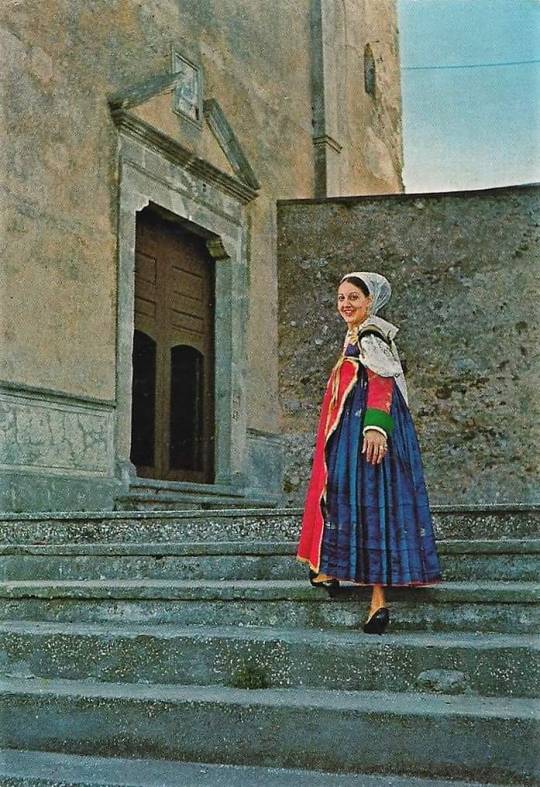
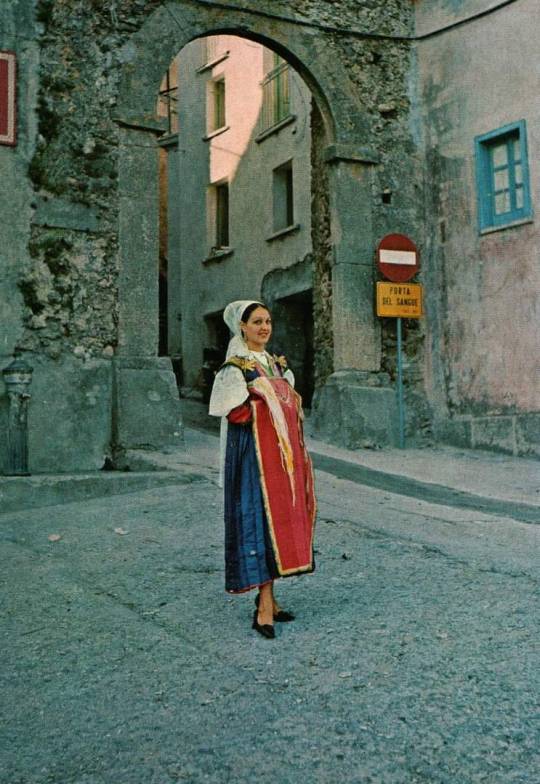
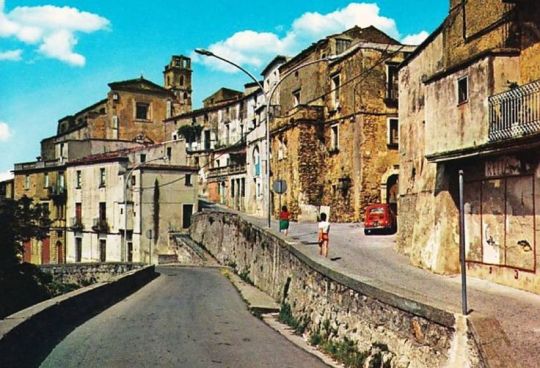
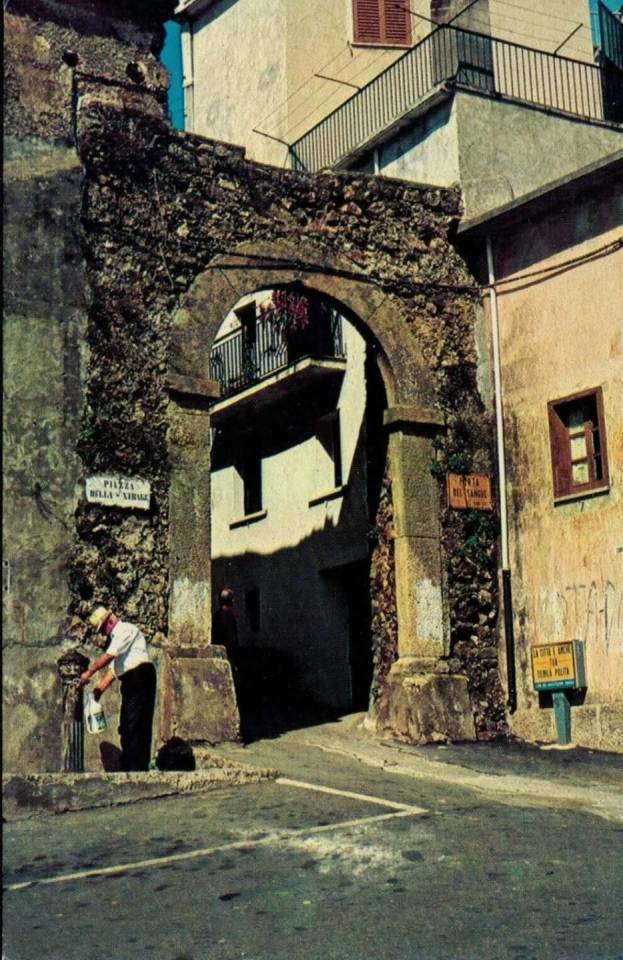
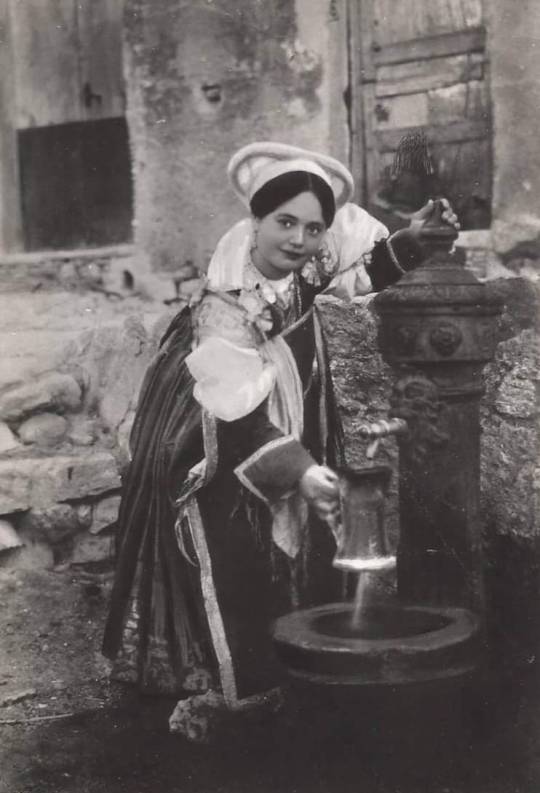
Occitan is still spoken in Southern Italy's Calabria
Blessed with one of the most beautiful languages, Italy is also home to a plethora of linguistic minorities, twelve to be precise, across fourteen regions, with almost three million speakers. The Occitan linguistic minority of the Alpine valleys of Northern Italy's Piedmont and Liguria is probably one of the most well known, also because of the importance the language had in the history of European culture and literature: the Langue d’Oc and its poetry inspired the troubadours of Provence, in Southern France. In those days, Occitan was spoken in the South of France, from the Atlantic to the Alps, but today only small pockets of Occitan-speaking people exists, mostly across the Alpine valleys of France, Liguria, Piedmont and in thr town Guardia Piemontese, in Southern Italy's Calabria.
How did Occitan speaking people end up from the mountains of Northern Italy to the southernmost region of the Italian peninsula?
It’s a long story, one that brings us back to the 13th century, to a religious minority called Waldensians and to the fact Calabria is known for being a welcoming land for all those seeking refuge, from Greeks to Albanians and Jews.
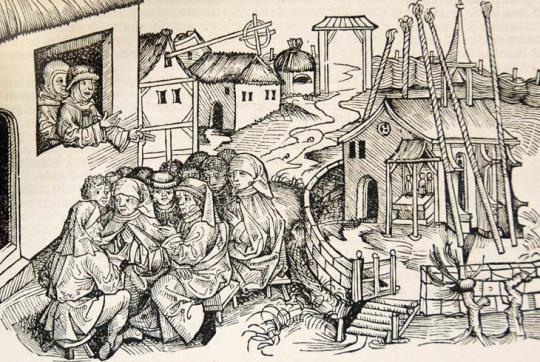
The Waldensian movement had developed in the Cottian Alps between France and Northern Italy towards the end of the 12th century, most likely thanks to the contributions of Peter Waldo (from whom the movement took its name). Waldensians lived a life of asceticism and poverty, but some of their more extreme views — lack of faith in transubstantiation and having associated the Catholic church with the “harlot of the Apocalypse” — turned them into religious pariah and victims of persecution across Europe.
A considerable group of Waldensians moved to Calabria in the 13th century to escape persecution in Northern Italy and the land of Calabria proved to be a blessing, because its fertile soil allowed the development of a prosperous community.
Guardia Piemontese is a town on the Western coast of Northern Calabria.

The date of Guardia's foundation is unknown, and the name of the place has changed several times in history. "Guardia" means watch or lookout, and this name is probably related to a lookout tower built in the 11th century. Such lookout towers were built to warn against Arab pirates, then called Saracens, ravaging the coast.

For the first century, the community of Guardia cohabited peacefully with their Catholic neighbors, but things tragically changed when the Waldensians decided to join the Protestant Reform: then, they became the enemy and victims of a religious persecution that was to obliterate them in the early summer of 1561. Those tragic events are still remembered today in Guardia Piemontese, thanks to a monument called La Porta del Sangue, (the Gate of blood), a memento to the violence that killed so many and forced many others to conversion.
Despite the suppression of their religion, the people of Guardia, or La Gàrdia, as they call it, have continued to use their distinct Occitan dialect, Gardiòl. Not surprisingly, it has been influenced by the speech of their neighbours in Calabria. For example, Gardiòl has adopted the use of retroflex consonants, common in Sicily and southern Italy.
The traditions that the Waldensians brought from Piedmont to Calabria, such as the Occitan language and certain customs, have survived over the centuries right through to the present day.
In 1863 the name Guardia was changed to Guardia Piemontese, to honor the geographical origins of the Waldensians.
On 5 June 2011, 450 years after the massacre in Guardia, the Waldensian Church opened a museum and cultural centre in the town. The museums tells the story of how the Waldensians arrived all the way in Calabria and preserves agricultural tools, the traditional clothing of Guardia Piemontese, made with a particular yarn of broom and the famous hurdy gurdy, an French instrument of medieval origins. In the Occitan valleys in Italy, the hurdy-gurdy was the traveling companion of buskers.

The Waldensian Church and the municipal authorities now collaborate closely in cultural affairs. Numerous ecumenical events have been planned together with the local Catholic community to mark the 500th anniversary of the Reformation.
Follow us on Instagram, @calabria_mediterranea

#guardia piemontese#calabria#italy#italia#south italy#southern italy#mediterranean#folklore#folk dress#traditional clothing#architecture#vintage#vintage photography#vingate photos#italian#italian women#folk costume#occitan#langblr#langue d'oc#d'oc language#heretic#heresy#hurdy gurdy#traditions#history#medieval
36 notes
·
View notes
Text
most of my family is protestant but not waldensian and i always forget what denomination they are cause the area they live in is mostly waldensian so i can't look it up or anything
15 notes
·
View notes
Text
Thinking about Lychee Hikari Club again and usamaru furuya is really my favourite mangaka to use as an example of "Eroguro's history as a political statement" bc even with just the two works of his I've seen (LHC, Innocents Shounen Juujigun) there are so many points of discussion that both are shown through and reflected by the Gorey/grotesque backdrop relating to the birth and cycle of fascist ideology and power structures, especially how it's glamourized to youth in the lens of toxic masculinity, the paranoia and fear that came of the Catholic churches use of religion for governance in the medieval world and especially the crusades (still applicable today!!) that impacted everything down to the individuals own socialisation with others (In regards to family life, poverty, homosexuality, etc.) and also real historical examples (Re: Waldensian persecution, corruption in the Knights Templar, and vaguely even the political relations between France and Occitania at that time reflected by the demographics that make up both), the list goes on and on and I couldn't even BEGIN to tackle everything that's shown in like,,, 30-ish chapters combined from BOTH series
And it's all done through the lens of the most beautiful, gut-wrenching tragic characters and their downfalls you've ever seen like who gave him the right
#gu6chan's musings#innocents shounen juujigun#innocents boys crusade#lychee light club#litchi hikari club#usamaru furuya#rlly have to spin Lychee Hikari Club in my head though because there are some great things represented by the characters that each 'embody'#a particular aspect of the hypocrisy/two-facedness of fascism and toxic masculinity but there are others i haven't quite got yet or that i#KNOW i can dig deeper into lmao#but fucking innocents shounen juujigun man.... its been years and it still fucks me up like#it really went 'heres an example of how the corruption of religion as a tool for governance can result in even the most mature; intelligent#people losing their minds so they can maybe even try to be happy and not feel ashamed for existing'#and STAKES YOU RIGHT THROUGH THE FUCKING HEART#they really were innocents man.... 😭
18 notes
·
View notes
Text
Women found temporary, often short-lived support for the notion of their innate equality with men as creatures of God in the heretical sects. Women in great numbers were active in organizing and proselytizing for the heretical sects and were visible among those suffering persecution and martyrdom. In this, they followed a pattern already noted in the history of early Christianity: as long as movements were small, loosely structured and persecuted, women were welcomed as members, given access to organizational leadership and shared authority with men. When the movement became successful, it became more tightly structured, more hierarchical and more male-dominated. Women were then relegated to auxiliary roles and to invisibility. This can be illustrated by the case of the Cathars.
The Cathar heresy flourished in the 11th century in the Languedoc and in the 12th century continued there and spread into Italy, the Rhineland and the Low Countries. Its dualistic belief system rested heavily on Gnostic texts and interpretations. Cathar doctrine taught that there were two distinct gods, one the creator of good, the other of evil. The material world was created by the evil god and its reproduction was by definition evil, hence Cathars rejected marriage and what they defined as the fruits of copulation, meat and milk. Since sin originated in Satan, Cathars held Eve blameless in the Fall; they saw her merely as Satan's tool. Following Gnostic doctrine, Cathars believed that Mary Magdalen had been the wife or concubine of Christ. They denied the doctrine of physical resurrection and held that resurrection referred purely to the soul. It was the evil god that created male and female; in the heavenly kingdom all creatures would be angels without earthly sexuality. These doctrinal differences from Catholic orthodoxy enabled Cathars to see men and women as more alike than different in the divine purpose and in their religious potential. Cathars believed that it was possible for human beings to come closer to perfection through ascetic living; those who succeeded were called perfecti; both men and women could reach that stage. In practice most people reached that stage only shortly before their death. While marriage was tolerated for the ordinary believer, it was forbidden to perfecti and perfectae. One reached that stage through the ceremony of the consolamentum, a sort of baptism by the laying on of hands. This meant that ordinary believers had a great deal of freedom in sexual matters during their lifetimes, since they were assured that after confession and receiving the consolamentum they would be perfected and saved. It is significant for the high status of women among the Cathars that, at least in theory, men and women could administer the consolamentum, although in practice few women ever did.
Catharism developed in the cities of the Languedoc, especially in Toulouse, the center of textile production and trade. Large numbers of women in the textile manufacturies became Cathars, as did male artisans and textile workers. Since the wages of female textile workers were much below those of male workers, even fully employed women could barely support themselves. To such women Catharism may have offered hope of salvation and practical communal support. The disproportionately large number of females among these heretics was noticed even by contemporaries.
A number of Languedoc noblewomen are known as leaders of Catharism and as perfectae. Phillipa, wife of the Count de Foix, led a convent of perfectae; one of the count's sisters was Esclarmonde de Foix, the "Princesse Cathare." After the death of her husband, she returned to the court of her brother, who built a house in which she, his former wife and other perfectae lived. In 1207 there was a public dispute between several bishops and representatives of Waldensians and Cathars. It is indicative both of her high status and of the limitations of her position that Esclarmonde participated in this public dispute on the side of the heretics and that the bishops reprimanded her and told her to go back to her spinning.
In the second half of the 12th century many Cathar women's convents were founded for unmarried daughters and widows of the lower nobility. These communities, led by perfectae, were under the spiritual guidance of a heretical bishop. While these Cathar women, like Catholic nuns, were active in education, spinning and weaving, they also proselytized and performed some religious ceremonies.
Constant persecution of the Cathars by the Inquisition made severe inroads in the strength of the movement. The violence of the Albigensian crusade of 1209 fell with particular brutality upon women. That year there was a massacre of heretic women and children in Beziers, and a year later, in Minerve, Cathars were given a choice of abjuring their belief or burning. One hundred forty male and female Cathars jumped into the flames. When crusaders started a reign of terror against the perfectae, the local population at times defended the heretics. In 1234 in several communities, armed women and other citizens prevented the arrest of female heretics. In 1243 women actively fought in defense of Montsegur castle, the last stronghold of the Cathars. During the siege almost all the noblewomen in the castle made a pact with the bishop to give them the consolamentum in case they were wounded and could not speak. The agreement was fulfilled when the situation in the fortress became hopeless. After the defeat, the military defenders of the fortress were allowed to retreat unharmed, but 200 male and female Cathars were burned on a great pyre, among them a number of well-known perfectae. After Montsegur the nobility largely withdrew from Catharism, and Cathar convents gradually disappeared.
By the end of the 13th century, Inquisition records no longer mention perfectae, which indicates that they lost their leadership position in the sect. In its declining phase Catharism attracted more adherents of the urban middle classes. Members of the middle class were drawn to Catharism because it allowed profit and interest, which the Church opposed. The Cathar women among this group appear in the record as among the faithful, but not as leaders. They supported the movement by raising funds, giving help to fugitives and doing missionary work. With the destruction of the Cathar convents the opportunity for women to exercise autonomous power and even political leadership disappeared. Many former perfectae joined the Beguines; others found refuge in Catholic convents. By the middle of the 14th century, Catharism had virtually disappeared. As would happen so often later in revolutionary and heretical movements, Catharism had seemed to promise women a role of spiritual and theological equality. Under the impact of persecution and of middle-class respectability this promise had given way to male dominance and patriarchal structures. The courage of the armed women defending their villages in the Languedoc against invading crusaders was only a singular outcry, throttled, and quickly forgotten.
-Gerda Lerner, The Creation of Feminist Consciousness
#gerda Lerner#female spirituality#female oppression#patriarchy#male violence#asceticism#catharism#women’s history#religious history#inquisition#heretical women
30 notes
·
View notes
Text
THEOLOGY
ABRAHAMIC RELIGIONS ->
THE THREE MAJOR ABRAHAMIC RELIGIONS are, in order of appearance, JUDAISM, CHRISTIANITY, and ISLAM, but there are other MINOR RELIGIONS.

■JUDAISM is an Abrahamic monotheistic religion based on the covenant shared between God and Abraham.
The holy scriptures of JUDAISM are called the TANAKH, after the first letters of its three parts in the Jewish tradition. T: TORAH, the Teaching of Moses, the first five books. N: NEVI'IM, the books of the prophets. KH: KETUVIM, for the Writings, which include the psalms and literature for the wise.
ORTHODOX JUDAISM is the belief in a strict interpretation of Jewish law, which should be grounded in the Torah. As such, the revelation given to Moses from God on Mount Sinai is made glorious and just.
CONSERVATIVE JUDAISM is the belief in marriage and membership as a Jew. Other characteristics will include support of the Zionist movement and the rejection of the immutability of the "Torah" and the "Talmud" while still having faith in the eternal truth upon which it is based.
REFORM JUDAISM is the belief of the renewal in our living Covenant with God, the people of Israel, humankind, and the earth by acknowledging the holiness present throughout creation – in ourself, in each other, and in the world at large – through practice that will include reflection, study, worship, ritual, and much more.

■CHRISTIANITY is an Abrahamic monotheistic religion centered around the birth, life, death and resurrection of Jesus Christ.
THE BIBLE is the holy scripture of the Christian religion, purporting to tell the history of the Earth from its earliest creation to the spread of Christianity in the first century A.D. Both the Old Testament and the New Testament have undergone changes over the centuries.
□ROMAN CATHOLICISM
Roman catholicism is a branch of Christianity which has its belief about the sacraments, the role of the Bible and tradition, the importance of the Virgin Mary and the saints, and the papacy.
HISTORY OF THE REFORMATION
THE REFORMATION was a reform movement in religious belief that swept through Europe in the 16th century. It caused the creation of a branch of Christianity called PROTESTANTISM, a name used collectively to refer to the many religious groups that separated from the Roman Catholic Church due to their difference in doctrine.
□PROTESTANTISM
Protestantism is a branch of Christianity which will deny the universal authority of the Pope and affirm all of the Reformation principles of justification by faith alone, the priesthood available to any practitioner, and the Bible as the only source of revealed truth.
□QUAKERISM
Quakerism is a branch of Protestantism
Follow your "inner light"
The Bible
Equality for all
God is accessible to everyone
No clergy
No religious ceremonies
No sacraments
LOCATION -> England
WHEN -> 17th Century
Adventism
Anglicanism
Anabaptism
Baptism
Irvingianism
Lutheranism
Methodism
Moravianism
Pentecostalism
Waldensianism
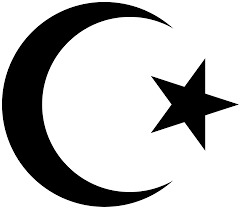
■ISLAM is an Abrahamic monotheistic religion that was revealed to Muhammad, a prophet of Allah, and written down in the Qur'an years later by his followers.
SUNNI
Muhammad did not specifically appoint a successor to lead the Ummah before his death. This sect did, however, approve of the private election of the first companion, Abū Bakr. In addition to the previous mentioned, Umar ibn al-Khaṭṭāb, ʿUthmān ibn ʿAffān, and ʿAlī ibn Abī Ṭālib are also accepted as al-Khulafāʾ ur-Rāshidūn. After this, they believe that Muhammad intended that the Muslim community choose a successor, or caliph, by consensus. A practitioner of this sect will base their religion on the Quran and the Sunnah as understood by the majority of the community under the structure of the four schools of thought. These are HANAFI, MALIKI, SHAFI'I and the HANBALI.
SHI'A
Muhammad's family, the Ahl al-Bayt, including all of his descendants, have distinguished spiritual and political authority over the community. It is believed that Alī ibn Abī Ṭālib was the first of these descendants and the rightful successor to Muhammad. As a result, it was rejected that the first three Rāshidūn caliphs have legitimacy.
------------------------------------------
ETHICAL RELIGIONS ->
THE THREE MAJOR ETHICAL RELIGIONS are BUDDHISM, TAOISM, AND CONFUCIANISM.
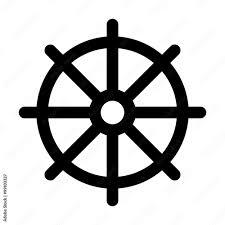
■BUDDHISM is an ethical religion that was revealed by Siddhartha Gautama for anyone to gain spiritual enlightenment if that person followed the eight-folded path along with a personal commitment to any noble truth given to him/her through the journey of life in order to reach nirvana.

■TAOISM

■CONFUCIANISM
15 notes
·
View notes
Note
1, 17, 29!
what are 3 things you’d say shaped you into who you are? being raised by Grandma definitely made me Peculiar (tm) because I was mostly left alone with her ragtag collection of books she got from ??? probably her old French employer. My grandma had an interest in medieval Christian heresies (*) and I lapped that shit up. When I got put into church classes (as it still happens to most kids here) I was pretty miffed that the other kids where just learning about the Jesus basics and no one was ready to discuss the Albigensian crusade. To this day I know a lot more about general Church practices than the regular folk to the point that sometimes people assume I'm deeply religious (by which they mean Catholic), but actually I'm 50% Tuscan and my grandpa from the other side used to rig the churchbells to sound out The Red Flag will Triumph then there were the Chinese brainworms I guess. I do not know how I got these, but I distinctly remember tracing the few characters I could find on objects lying around. After thirty years I can tell you this was mostly likely "made in China" over and over. then another core memory is going to see a castle near the ancestral seat of the house of Maranzalla, i.e. piss nowhere, rural Tuscany, as a child, and the guide showing us the stonework being all fascinated and ooohhhh aahhhh, and me as well, until my dad says "this was probably dug up by great-great-great grandpa, with his bare hands, for free, and on a feastday." thus my hatred for the aristocracy was born. (*) Anything from late antiquity up to Luther. Luther itself not so much, we were more of a Beguine / Waldensian household. 17. name 3 things that make you happy the fucking quiet you know? late evening, the job is done, dinner will be ready soon, everyone is at peace, you can take a fucking breath. when it's super hot outside but the tapwater is still fresh. when the tapwater comes out lukewarm you know you're in deep trouble focaccia 29. what do you do when you’re sad? depends. i have this strict rule never to be sad after 9 pm as you're not operating on regular brainpower which makes your readings most likely incorrect. but i'm also one of those "the farm must keep going" people so usually I just take advantage of the slump to complete tasks.
3 notes
·
View notes
Text



138. Schänder - Schänder (Black/Death Metal, 2021)
The illustration is out of "The history of the Evangelical churches of the valleys of Piemont" by Sir Samuel Morland - published in 1685.
The Savoyard–Waldensian wars were a series of conflicts between the community of Waldensians (also known as Vaudois) and the Savoyard troops in the Duchy of Savoy from 1655 to 1690. - These took place as a part of the European wars of religion.
#metal#black metal#art#artwork#music#heavy music#artist#cover art#heavy#illustration#sir samuel morland#war#17th century#history#impaled#england#austria#europe#battle
12 notes
·
View notes
Text
by W. Robert Godfrey | By the twelfth century, the church in Western Europe was indeed powerful and impressive. In the emerging Gothic architecture, we can see something of the devotion of the people and the wealth of the bishops. In the developing scholastic theology, we can see something of the intellectual dominance and refinement of thinking among academic theologians. In the Crusades against Islam in Jerusalem and heretics at home…
3 notes
·
View notes
Text
Started reading The Witches' Sabbath by Kelden and the first chapter is tracing the history and origins of witches meeting in remote places and doing nefarious witch things. Some of it I knew already: persecution of Christians by the Romans, orthodox Christians persecuting heterodox Christians (partcularly the Waldensians and Cathars), antisemitism, etc. but he also draws parallels between night-wandering women who give good fortune and the Wild Hunt.
3 notes
·
View notes